Abstract
The carbon balance was determined for a fermentation in which mannitol is produced from glucose by an Aspergillus species. The products found were: cells (17% of carbon input), CO2 (26%), mannitol (35%), glycerol (10%), erythritol (2.5%), glycogen (1%), and unidentified compounds (8%). Thus, 92% of the carbon input was accounted for. Cell-free enzyme studies showed that mannitol was synthesized via the reduction of fructose-6-phosphate and not by the direct reduction of fructose. If the cell yield from glucose was assumed to be 50% and the theoretical conversion efficiency from glucose to polyols was 90%, as calculated from the energy balance, then 34% of the glucose carbon was used for growth and 53% was used for polyol formation.
Full text
PDF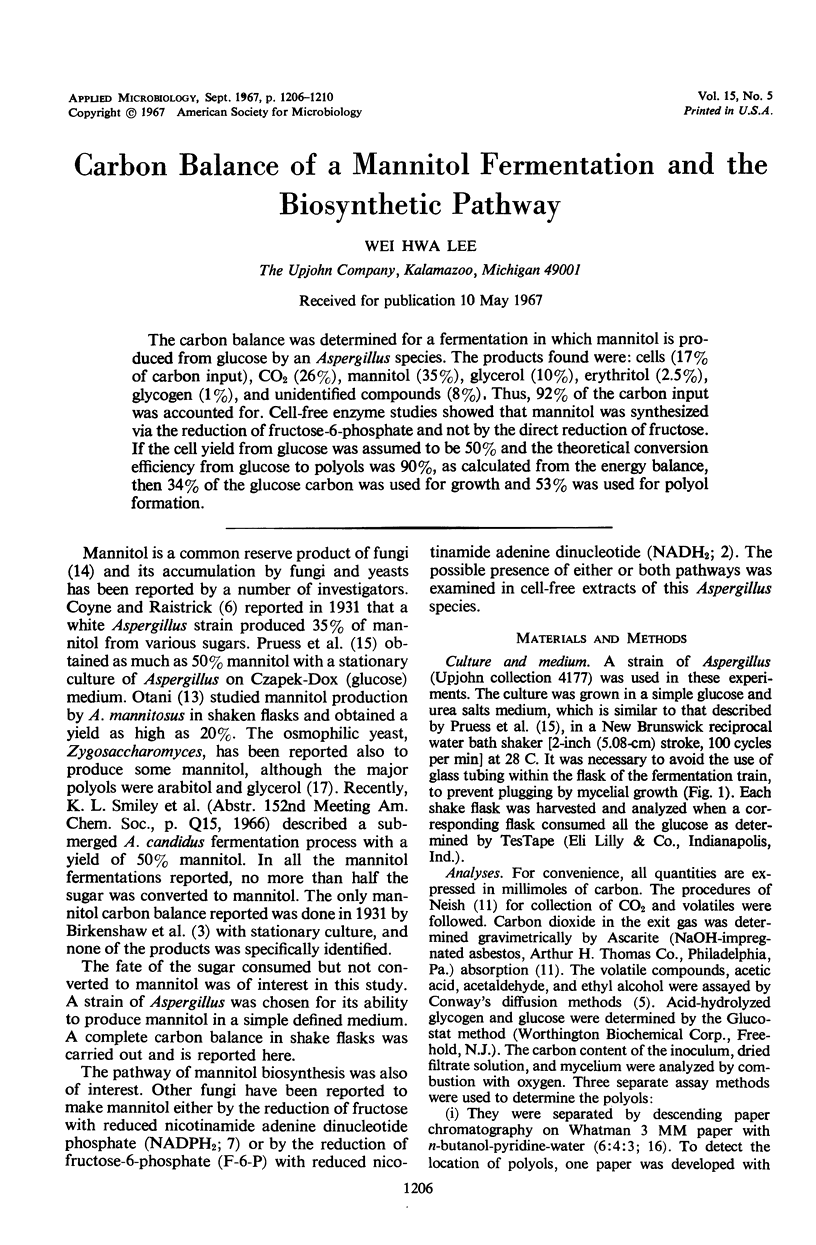
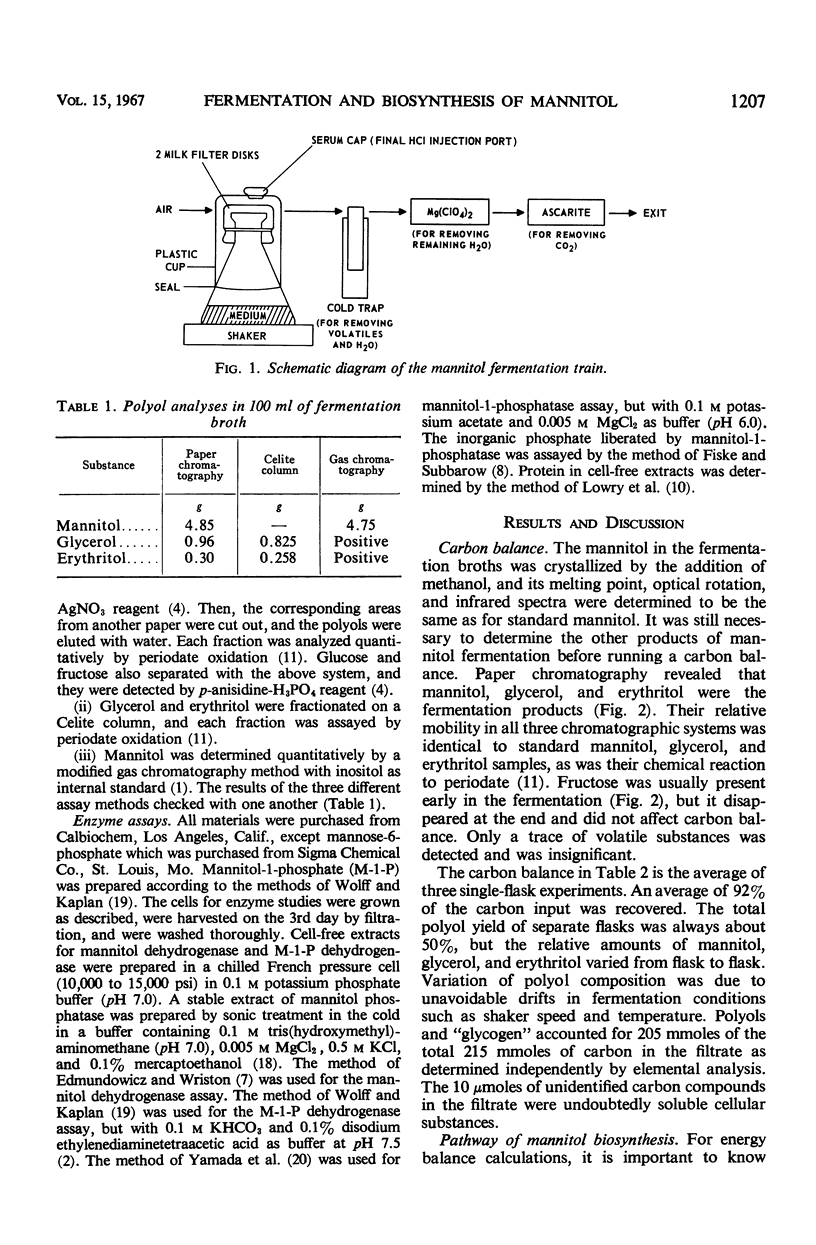
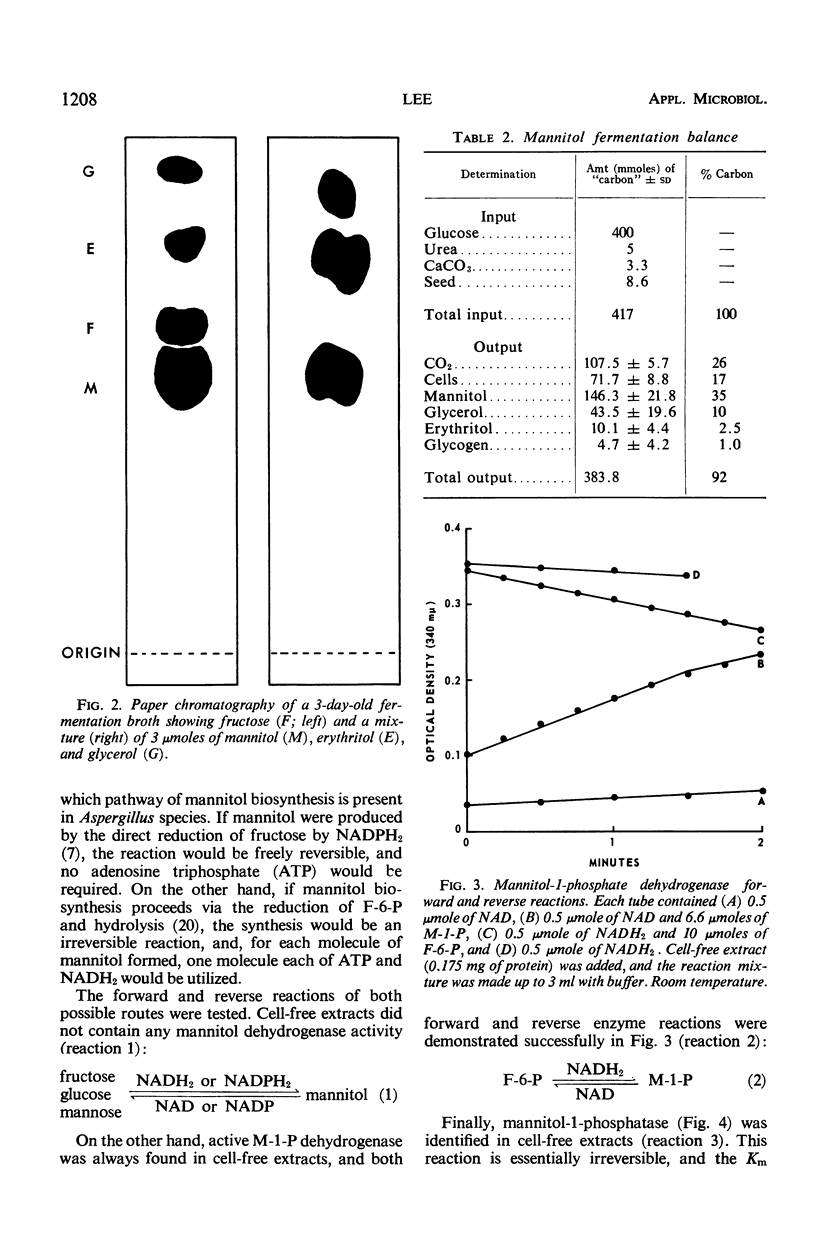
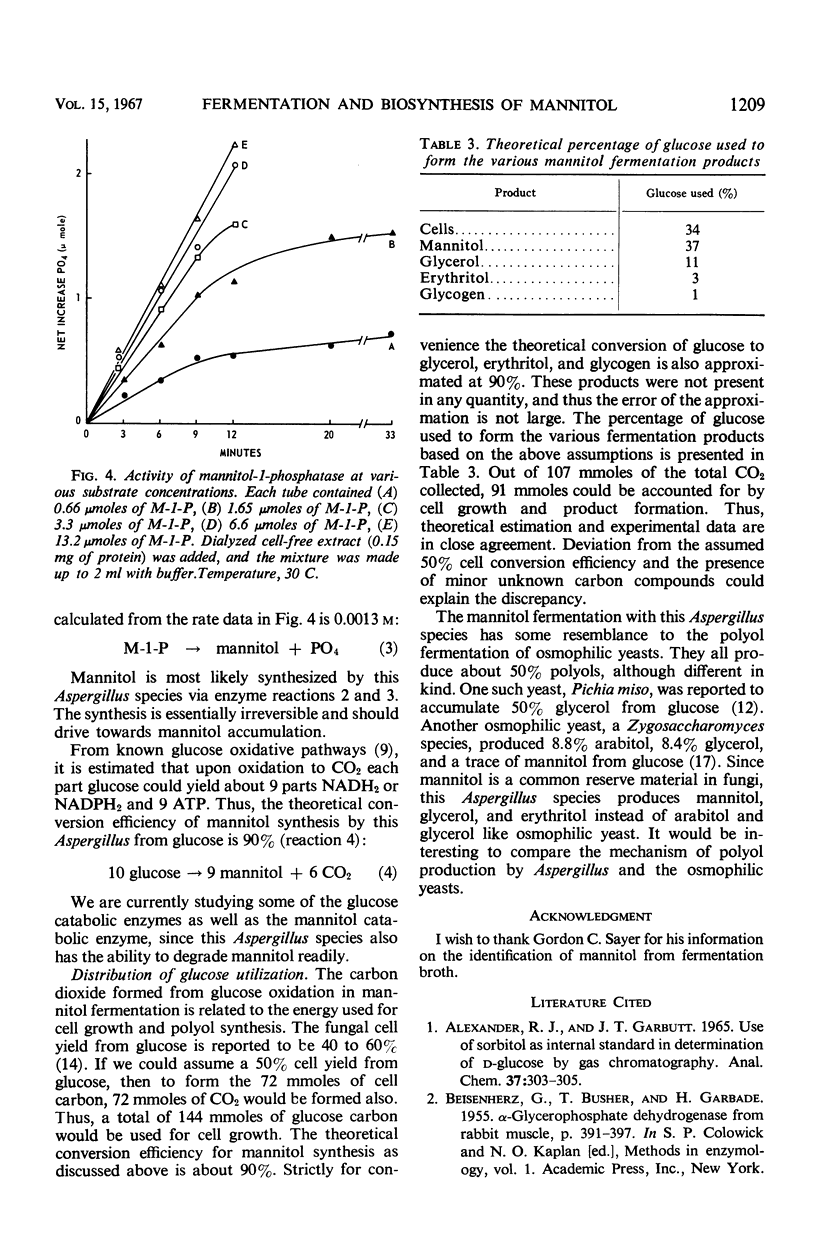
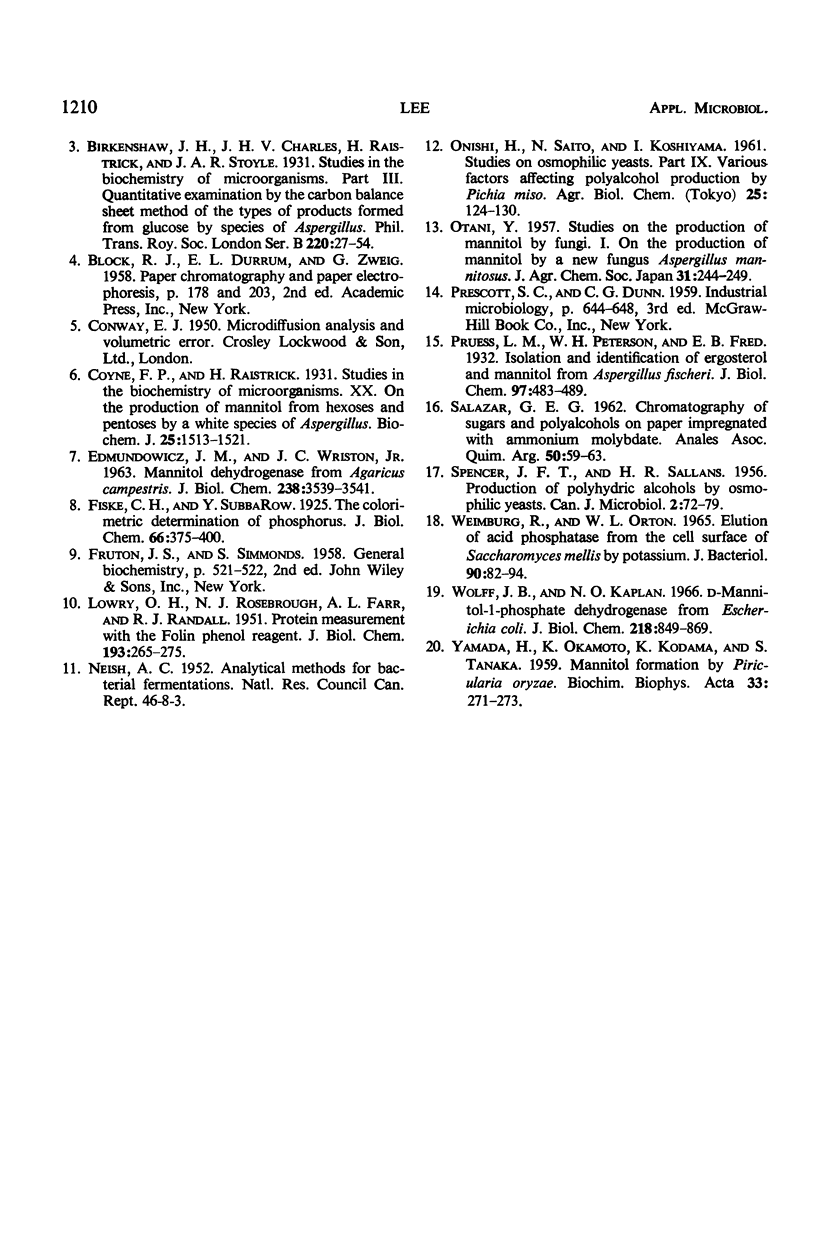
Selected References
These references are in PubMed. This may not be the complete list of references from this article.
- ALEXANDER R. J., GARBUTT J. T. USE OF SORBITOL AS INTERNAL STANDARD IN DETERMINATION OF D-GLUCOSE BY GAS LIQUID CHROMATOGRAPHY. Anal Chem. 1965 Feb;37:303–305. doi: 10.1021/ac60221a042. [DOI] [PubMed] [Google Scholar]
- Coyne F. P., Raistrick H. Studies in the biochemistry of micro-organisms: On the production of mannitol from hexoses and pentoses by a white species of Aspergillus. Biochem J. 1931;25(5):1513–1521. doi: 10.1042/bj0251513. [DOI] [PMC free article] [PubMed] [Google Scholar]
- EDMUNDOWICZ J. M., WRISTON J. C., Jr MANNITOL DEHYDROGENASE FROM AGARICUS CAMPESTRIS. J Biol Chem. 1963 Nov;238:3539–3541. [PubMed] [Google Scholar]
- LOWRY O. H., ROSEBROUGH N. J., FARR A. L., RANDALL R. J. Protein measurement with the Folin phenol reagent. J Biol Chem. 1951 Nov;193(1):265–275. [PubMed] [Google Scholar]
- SPENCER J. F., SALLANS H. R. Production of polyhydric alcohols by osmophilic yeasts. Can J Microbiol. 1956 Apr;2(2):72–79. doi: 10.1139/m56-011. [DOI] [PubMed] [Google Scholar]
- WOLFF J. B., KAPLAN N. O. D-Mannitol 1-phosphate dehydrogenase from Escherichia coli. J Biol Chem. 1956 Feb;218(2):849–869. [PubMed] [Google Scholar]
- Weimberg R., Orton W. L. Elution of Acid Phosphatase from the Cell Surface of Saccharomyces mellis by Potassium Chloride. J Bacteriol. 1965 Jul;90(1):82–94. doi: 10.1128/jb.90.1.82-94.1965. [DOI] [PMC free article] [PubMed] [Google Scholar]
- YAMADA H., OKAMOTO K., KODAMA K., TANAKA S. Mannitol formation by Piricularia oryzae. Biochim Biophys Acta. 1959 May;33(1):271–273. doi: 10.1016/0006-3002(59)90534-7. [DOI] [PubMed] [Google Scholar]


